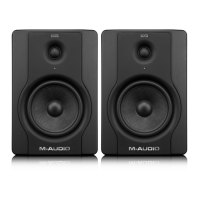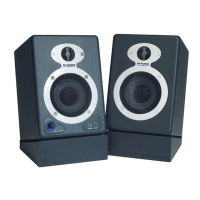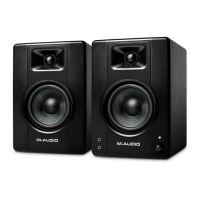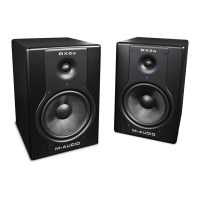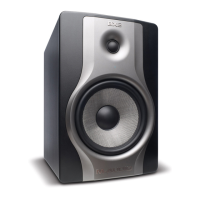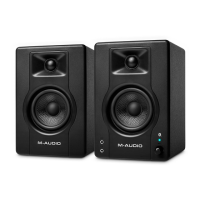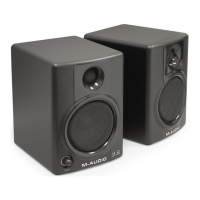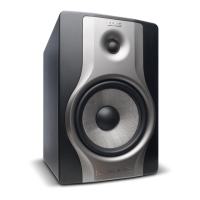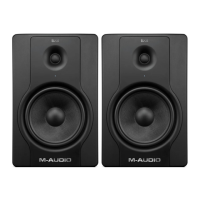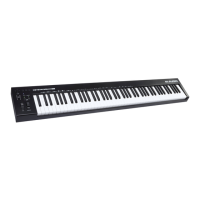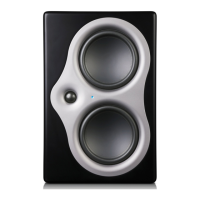
Do you have a question about the M-Audio STUDIOPHILE DSM3 and is the answer not in the manual?
Essential warnings regarding electric shock, fire hazards, and proper usage.
Comprehensive list of instructions for safe operation and maintenance of the speakers.
Lists included items like speaker, power cable, isolation pads.
Highlights key attributes like bi-amplification, digital inputs, DSP.
Details amplifier types (Class D, Bi-Amp) and design aspects.
Details analog and digital input options (XLR, TRS, AES/EBU, S/PDIF).
Describes LF (6.5-inch woofers) and HF (1-inch dome tweeter) driver specifications.
Covers MDF enclosure, custom waveguides, and bass reflex port.
Explains DSP for crossover, EQ, and volume trim.
Details all ports, switches, and knobs on the rear of the speaker.
Explains AC connector, voltage selection, and fuse installation.
Covers analog (XLR, TRS) and digital (AES/EBU, S/PDIF) input types.
Details AES/EBU and S/PDIF digital input and thru connections.
Describes how to adjust High-Frequency, Mid-Range, Low-Frequency, and High-Pass EQs.
Describes the front panel components, including the LED indicator.
Explains the meaning of different LED states (Blue, Yellow, Red).
Instructions for unpacking and reusing speaker packaging.
Guidelines for placement, stands, and ventilation.
Discusses vertical and horizontal placement options for optimal sound.
Provides advice on symmetrical placement and distance from walls.
Diagrams and recommendations for stereo monitoring setup.
Diagrams for 5.0 surround sound environment setup.
Steps for setting voltage, installing fuses, and connecting power.
Explains how to make analog and digital audio connections.
How to set the channel assignment for digital inputs.
Explains volume trim and EQ settings for tuning speaker response.
How to adjust input sensitivity and volume trim for optimal signal-to-noise ratio.
Introduces the various EQ controls available for tuning speaker response.
How to adjust the HF Shelf EQ for high-frequency variations.
How to adjust the Mid-Range EQ for resonance or damping compensation.
How to adjust the LF Shelf EQ to reduce low-frequency buildup based on placement.
How to adjust bass roll-off and protect LF drivers or couple with a subwoofer.
How to use desktop EQ settings to compensate for frequency buildup.
Advice on using the speakers to achieve optimal sound quality and longevity.
Explains the meaning of different LED states and their implications.
Guidance on resolving common problems like no sound or loud noises.
Lists detailed technical specifications of the DSM3 speakers.
Presents frequency response graphs for EQ settings.
Outlines the conditions and duration of the product warranty.
Instructions and benefits of registering the product for warranty coverage.
